How To: Find out where all your ETH is using BALANCES
Objective & Benefit
When you use Multi-chain DeFi for a while, especially if you use multiple addresses on chain, it's common to lose track of where all your assets are, especially ETH as this is the native asset on several chains also.
We're going to use this example to show how Vektor can very easily search for and summarise the exact locations and amounts of all your ETH, wherever it is, and even show you a global total. No static spreadsheets required!
Functions used
BLOCKCHAINS - get the list of blockchains supported by VektorLABELS - get a list of labelled addresses.LABELS.ADD - add a human-readable label to a blockchain address.BALANCE - get the balance of an asset on a blockchain for a labelBALANCES - get the balances for all assets on all blockchains for all labelsBALANCES.SUM - sum the balances for all assets on all blockchains for all labels
Step-by-step
1. Understand which blockchains Vektor supports
Submit the BLOCKCHAINS function to see the current list of chains supported by Vektor. This represents the current total search space.

2. Add your labelled addresses
For Vektor to peform a multi-chain asset balance search, you first need to assign addresses as LABELS.
About Labels
LABELS in Vektor are human-readable names that you assign to blockchain addresses.
Vektor is a powerful tool that executes transactions on multiple blockchains. By registering an address as a Vektor label, you unlock many useful multi-chain functionalities. The names you assign to labels also become easier to use in functions, and save you from copy-and-pasting addresses everywhere.
LABELS can be assigned to any address present on one or more Vektor-supported chains, whether that address is controlled by you (i.e. you have the private key) or the address is controlled by someone else (i.e. a 'Watch only' address). Vektor can only execute transactions using addresses controlled by you.
To see which labels you have already assigned, use the LABELS function.

You can leave this pane open; it will auto-update if you add/remove labels.
To add a new label, use the LABELS.ADD subfunction. You will see a confirmation in a new pane.
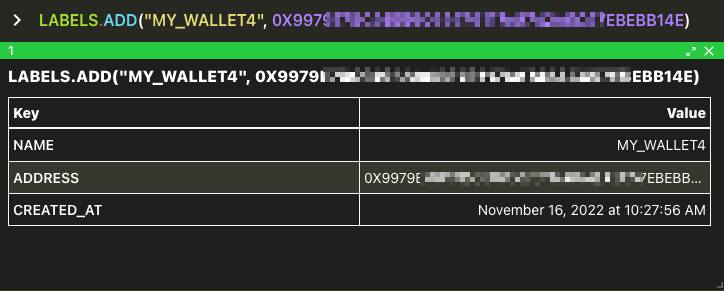
3. Check a single balance
To check a single balance of a single asset on a single chain, use the BALANCE function.
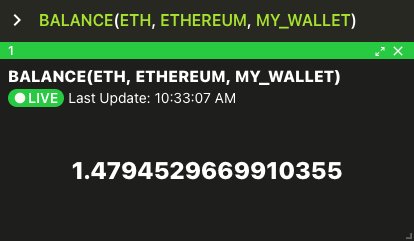
This is useful if we know where to look - but the point of this procedure is to find your ETH wherever it is!
4. Check all your balances of everything
Now for the good part - use the BALANCES to make Vektor search all of your labelled addresses, for all assets, on all (supported) chains.

Great - but we are only interested in ETH for now. Let's refine on the next step.
ASSETS.GET function. We plan to give users the ability to register their own assets, but for now you need to let us know if there is something missing that you need - we can add it quickly.5. Check all your ETH balances
Use INCLUDE_ASSETS=, one of the optional arguments of BALANCES, to filter the assets.
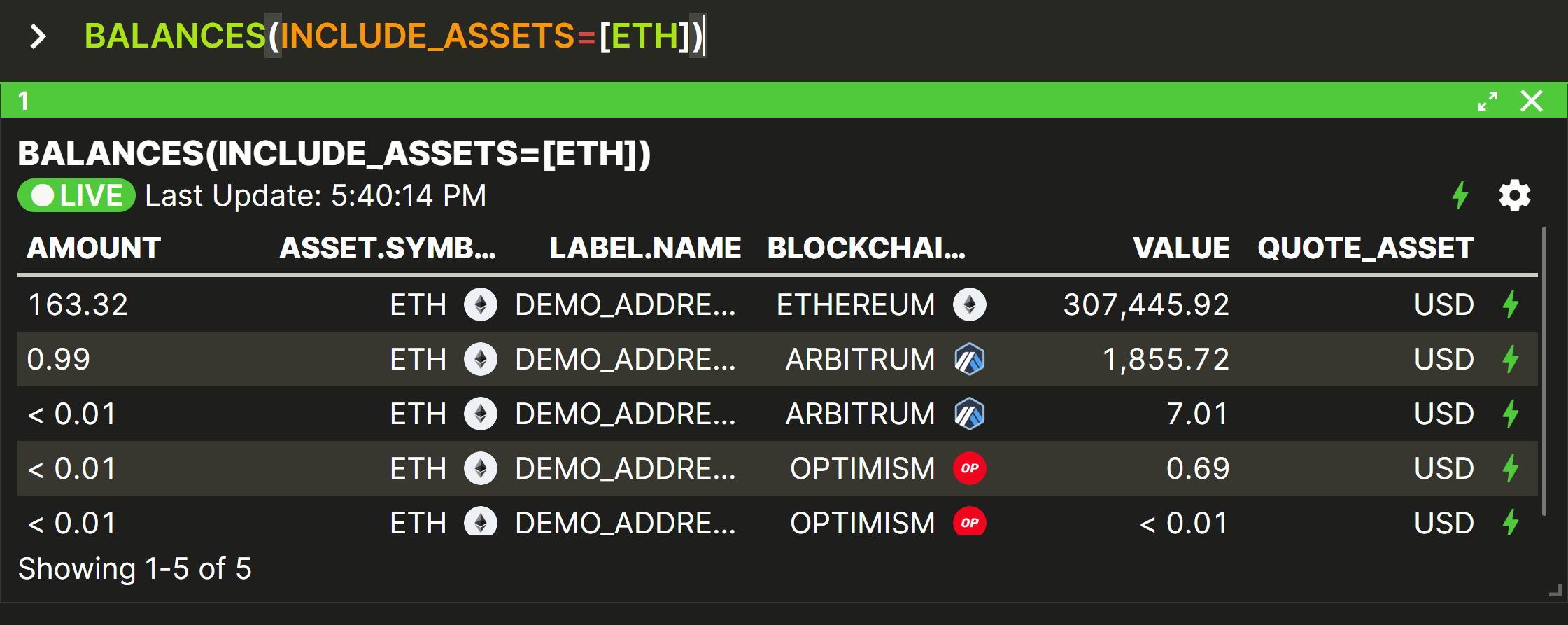
BALANCE will return a single object/value, while 'plural' functions like BALANCES will return a list of objects/values. You can read more about common syntax patterns here.Did you notice something missing? We are showing only native ETH here, but probably we should include all the different forms of ETH for a complete picture.
6. Include ETH equivalents
You can include several assets in the INCLUDE_ASSETS= filter by using array notation. Let's expand to include Wrapped ETH WETH and staked ETH STETH.

Great! Now we have a complete picture of our ETH, WETH, and STETH balances, across all my labels, whichever chain they are on.
WRAP function in Vektor to easily convert between native and wrapped assets.Now I want to know the TOTAL amount (in ETH), not the USDC value as per the default.
7. Change the QUOTE asset
You can use the QUOTE option in BALANCES to change the quote from USDC to ETH.
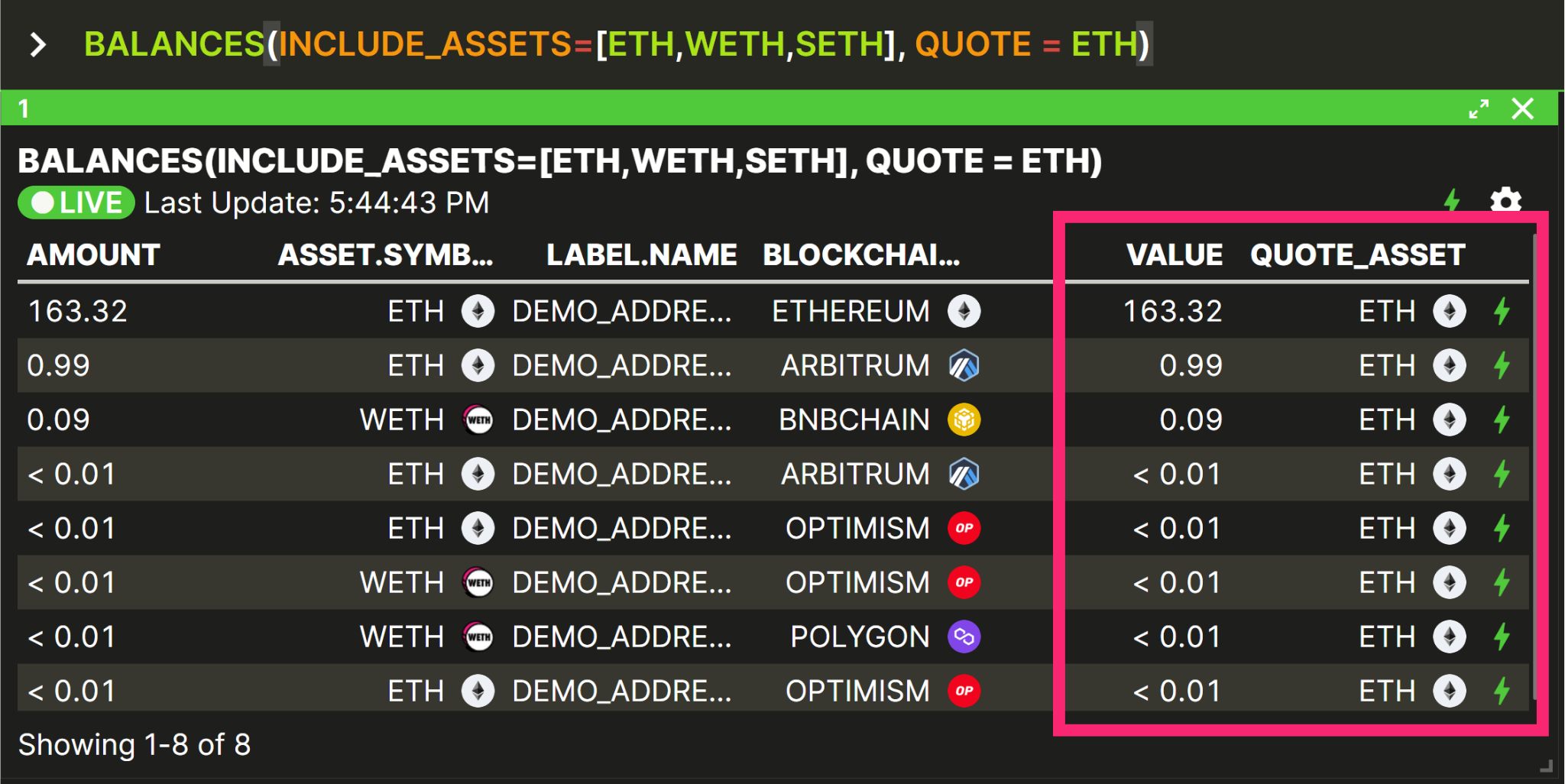
8. Compute the total
Finally, let's use the BALANCES.SUM sub-function to add all this together.
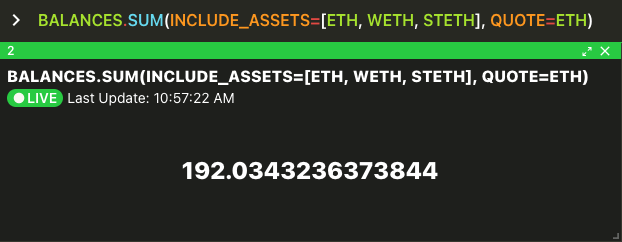
Hope you liked this How-To use-case! You can find more here.
Read more:
- Explainer: What is VXL
- Explainer: VXL Common Syntax Patterns
- More How-To's
